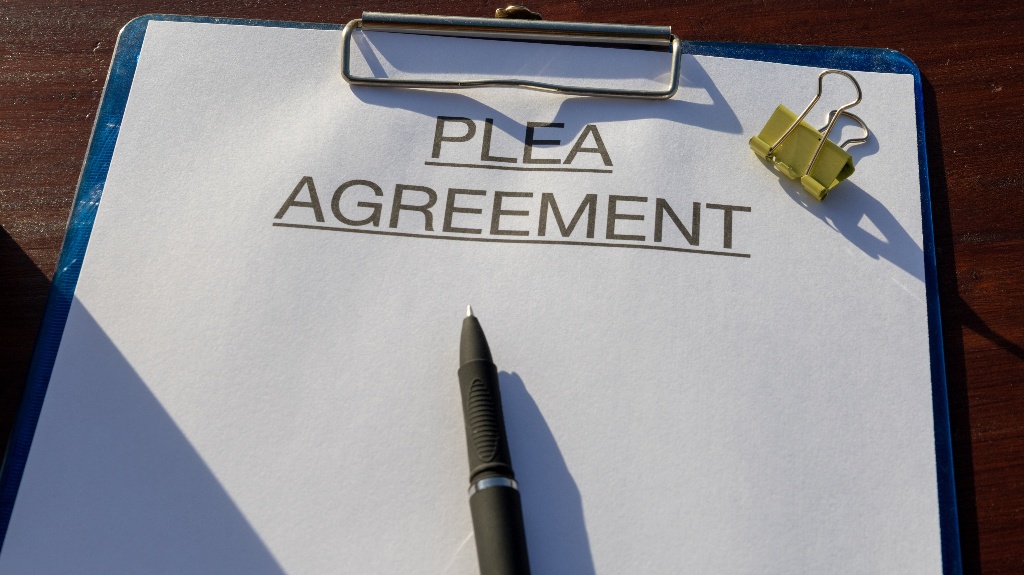In federal criminal cases, most convictions don’t come from trials. They come from plea agreements. For many defendants, this step marks a turning point in their case. But what is a plea agreement, exactly, and how does it work in federal court?
What Is a Plea Agreement?
A plea agreement is a deal negotiated between the defendant and the U.S. Attorney’s Office. In simple terms, the defendant agrees to plead guilty, often to fewer charges or a lesser offense, in exchange for some benefit. That might be a reduced sentence, the dismissal of other charges, or a recommendation for leniency.
It is not automatic, and it should never be taken lightly. But when the evidence is strong, and the risks of trial are high, it can be a smart and strategic move.
How the Process Works
Here’s how plea agreements typically unfold in federal court:
- Negotiations begin. After the indictment, the defense and prosecution may begin talking. In some cases, this can happen even before formal charges are filed.
- An agreement is drafted. If both parties agree to terms, a written plea agreement is prepared. It will outline the charges the defendant is pleading to, specify which charges (if any) will be dismissed, indicate whether there is a sentencing recommendation, and inform the defendant of any rights they are waiving, such as the right to appeal.
- A plea hearing is held. The judge will review the agreement and question the defendant under oath. The court must ensure that the plea is made voluntarily, knowingly, and with a full understanding of the consequences.
- Sentencing follows. Even if the agreement contains a sentencing recommendation, the judge is not bound by it. Federal judges follow the U.S. Sentencing Guidelines, but they have broad discretion to go above or below the recommended range.
Why Defendants Accept Pleas
Going to trial can be risky. A plea agreement brings a level of certainty. It can substantially reduce sentencing exposure and give the defense more control over the outcome.
But a plea also means giving up the right to a trial, to challenge the evidence, and in most cases, to appeal. It is not just a legal decision. It is a life decision. The consequences are long-term, and the fine print matters.
Types of Plea Agreements
Most plea deals in federal court fall into one of two categories:
- Under Rule 11(c)(1)(B), the prosecutor agrees to recommend a particular sentence, but the judge can ignore it. The defendant cannot withdraw the plea if the judge imposes a sentence different from the one agreed upon.
- Under Rule 11(c)(1)(C), the parties agree to a specific sentence. If the judge does not accept it, the defendant can withdraw the plea.
Understanding which type of agreement is being offered is essential.
Cooperation and Substantial Assistance
In certain plea agreements, the defendant may commit to cooperating with the prosecution, which involves sharing information with the government or testifying against others. If the cooperation is helpful, the prosecution may file a motion for a reduced sentence under Section 5K1.1 or Rule 35(b).
However, these motions are entirely at the government’s discretion. Even full cooperation does not guarantee a sentence reduction.

A Word of Caution
Most federal plea agreements include waivers of the right to appeal and post-conviction rights. Once you sign, you are bound by the terms and conditions. These waivers are enforceable and can prevent you from challenging the outcome later.
If you are unclear about what you are agreeing to or feel pressured into accepting a deal, it is time to stop and ask questions. You deserve clear, honest guidance.
Contact Our Legal Team To Learn More
Plea agreements are not shortcuts. They are tools used carefully and strategically to protect your future. But they must be fully understood before you commit.
At the Law Office of Aaron L. Wiley, we help clients navigate every step of the federal process. If you or someone you care about is facing federal charges, let’s discuss your options before making any decisions.


